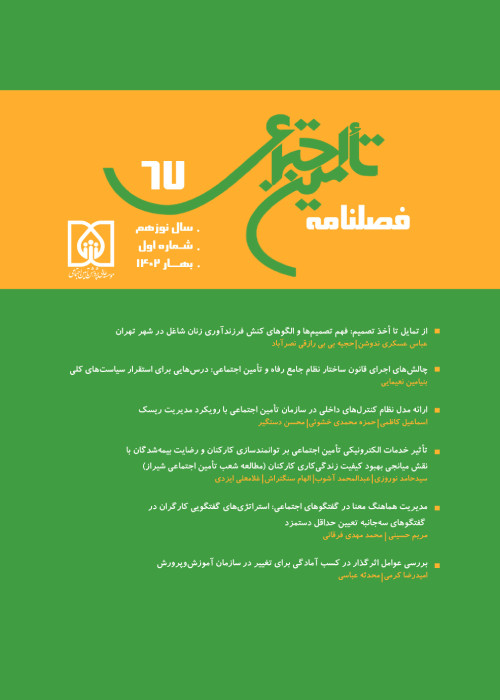From Desire to Decision: Childbearing Decision-Making patterns among Working Women in Tehran
Since the early 1380s, fertility in Iran has reached below the replacement level. Despite a slight increase in 2015, after that fertility remains at a low level. Over this period the ideal number of children has been about 2.5 children. There is evidence of a gap between the ideal and actual number of children and it shows that at least part of the couples' desire to have children is not realized. Working women are one of the special and important subgroups of the population that, due to work and family conflicts, it is expected that the realization of their childbearing ideals will face more serious obstacles and challenges compared to non-working women. The aim of this study is to show what is the understanding and interpretation of working mothers about their fertility decisions. What is their strategy in dealing with the desire to have children and the mental concerns and challenges they face?
The research approach of this study is qualitative. The sample consists of 22 employed mothers in Tehran who were determined through purposive sampling with maximum diversity based on the level of theoretical saturation. The data collection method is in-depth interview and the analysis method is thematic analysis.
In this study, three patterns of women's fertility decisions were extracted. A pattern of ignoring fertility desires that includes women who do not intend to have children but whose ideal number of children is higher than the number of children they currently have. The model of rationalizing the avoidance of childbearing, which includes women who do not intend to have more children and consider their fertility decisions to be rational. The third pattern is a contradictory understanding of reproductive decisions that includes women who intend to have children, however, they have many concerns and challenges related to the work environment, family and children.
The findings show that there is a significant conflict between work and family roles that affects the fertility decisions of working women. Iranian society needs a structure that reduces the incompatibility between employment and parenthood.
- حق عضویت دریافتی صرف حمایت از نشریات عضو و نگهداری، تکمیل و توسعه مگیران میشود.
- پرداخت حق اشتراک و دانلود مقالات اجازه بازنشر آن در سایر رسانههای چاپی و دیجیتال را به کاربر نمیدهد.




